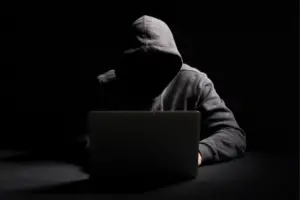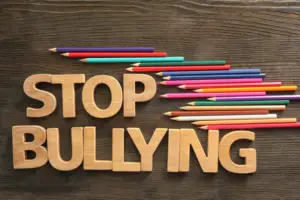Have you been wondering why cyber bullying is common in schools? Worry no more. This article contains information on major influences of cyber bullying at schools.

The use of the internet has a lot of advantages, however, it also has a lot of negative effects on its users. One very common one is the increase in cyber bullying which is very common amongst teens. Unlike offline bullying, cyber bullying has more effect on the victims because it involves a greater population, both known and unknown.
Cyberbullying [2] is a form of bullying that takes place online. It involves the use of electronic communication technologies to harass, or harm others. This can include posting hurtful or threatening messages, images, or videos on social media or other online platforms, spreading rumors or lies about someone, or repeatedly sending abusive messages or emails.
Cyber bullying can have serious negative effects on the mental health and well-being of the victim, and can lead to depression, anxiety, social isolation, dropping out of school and even suicide in extreme cases. This was the case of a student in a movie I will be recommending at the end of this article.
Forms of Cyber Bullying
There are different types of cyberbullying [1], and they can take many forms. Here are some them:
1. Verbal abuse
This involves using words to hurt, harass, or intimidate someone online. This can include insults, threats, or other derogatory language.
2. Exclusion
This involves intentionally leaving someone out of online groups or conversations, or spreading rumors and lies about them to make them feel isolated and lonely.
3. Cyberstalking
This involves repeatedly harassing or threatening someone online, and may also include following them on social media, sending them unwanted messages, or making false accusations against them.
4. Secret Website Creation
Cyber bullying may also come in the form of creating secret websites or blogs with the goal of harassing another person. For instance, the brain behind the site might conduct an internet poll about a target or targets. Questions in the poll may include extremely hurtful questions like asking others to rank their peers by their looks, etc.
Other times, they create websites or a blog about the target that is embarrassing . They might even post the target’s personal information and pictures putting them in danger of being contacted by predators or they will spread rumors or gossip about the victim online through websites. In cases like this, the bullies tend to get some of the information about their victims through either hacking of personal devices or social media accounts.
5. Sexting
This involves sharing sexually explicit messages, images, or videos with someone without their consent, or threatening to share such content in order to control or intimidate them.
6. Trolling
This involves deliberately provoking or upsetting someone online, often by posting inflammatory or offensive comments or messages.
These are just a few examples of the different types of cyber bullying that can occur. It’s important to remember that any behavior that is intended to harm, intimidate, or harass someone online can be considered cyber bullying.
Factors that Influences Cyber bullying at Schools
Although cyber bullying is an online act, it has become very common among teens and at schools since students tend to have more access to phones. Cyber bullying in schools can be caused by a variety of factors.
In this article, we will be identifying some of these factors. Here are some potential factors that may contribute to cyber bullying in school:
1. Access to technology
In the era we are in, it has become very difficult to see a student without a smartphone or even laptops. There is no doubt that they need these gadgets for school work but then, some of these students tend to use the devices in their possession for other purposes. The prevalence of technology and social media use among students have made it easier for cyber bullying to occur in schools. The more access students have to technology, the more opportunities there are for cyber bullying to take place at any time and from any location. This can make it difficult for parents and educators to monitor online behavior and intervene when necessary.
2. Social Dynamics
Social dynamics within a school can also contribute to cyber bullying. Students who feel excluded, marginalized, or socially isolated may be more likely to engage in cyber bullying as a means of gaining power or attention.
On the other hand, students who are marginalized or viewed as different from their peers may be more likely to be targets of cyber bullying. This can include students who have a disability, are a different race or ethnicity, or have a different religion, etc. Cyber bullying can be used as a tool to exclude and alienate these students even further.
3. Peer Pressure
Peer pressure can also be a factor in cyber bullying. Students who want to fit in with a particular group may engage in bullying behavior to gain acceptance or approval from their peers. This is common for high school students who may be more focused on fitting in with their peers than standing up for what’s right.
4. Anonymity

The anonymity of the internet can make it easier for students to engage in cyber bullying without fear of being caught and punished. When students are anonymous online, they tend to have more guts to do and say hurtful things or engage in aggressive behavior. Also, the anonymity can make it more difficult for teachers and parents to identify the perpetrator and intervene.
5. Lack of Awareness
Due to ignorance, some students may not fully understand the impact of their actions and may not be aware of how their behavior affects others or may not realize that their actions are considered cyber bullying. This can include sending hurtful messages, sharing embarrassing photos, or making negative comments online. Students may not realize that these behaviors can have serious consequences and can lead to emotional harm for the victim. A lack of awareness can contribute to cyber bullying behavior.
6. Lack of Supervision
Cyber bullying can occur outside of school hours, making it difficult for teachers and school staff to monitor and intervene in online conflicts. This can be especially challenging when cyber bullying takes place on personal devices, social media platforms or secret websites that are not monitored by the school. As a result, it’s important for parents to be aware of their child’s online activity and for schools to educate students about appropriate online behavior.
7. School Culture
The overall culture of a school can also influence cyber bullying. A school that is more interested in money over the welfare of the students, as well as a school with a culture of intolerance, aggression, or competition may be more likely to have incidents of cyber bullying.
8. Mental Health Issues

Students who are struggling with mental health issues, such as depression or anxiety, may be more likely to engage in cyber bullying or become targets themselves. When students are struggling with mental health issues, they may feel more vulnerable and tend to bully their competitors. Alternatively, they may become targets of cyber bullying because they are seen as vulnerable or weak.
Ways To Prevent Cyber Bullying at Schools
Preventing cyber bullying in schools requires a comprehensive effort that involves students, parents, teachers, and administrators. Here are some measures that can be used to prevent cyber bullying at schools:
1. Education and Awareness

Educating students, parents, and teachers about cyber bullying and its impact can help raise awareness about the issue and its consequences. This can include classroom presentations, workshops, and seminars.
2. Monitoring technology use
Although this can be a bit difficult, schools can find a way to monitor technology use by students in school, to identify potential cases of cyber bullying. This can include monitoring social media accounts and online communication.
3. Set Strict Punishment for offenders

Schools should have clear policies and outline consequences for those who engage in such behavior. These policies should be communicated to students, parents, and teachers so that they are aware of what to expect when they go against the school’s policies. For instance, expulsion or suspension with hard labor can serve as a punishment for offenders.
4. Encouraging Reporting
Oftentimes, for fear of the unknown, students are scared of reporting school mates who are involved in cyber bullying. Where students have been enlightened about cyber bullying and encouraged to report such cases, cyber bullying can be curbed to a large extent. Hence, schools should encourage students to report instances of cyber bullying to a teacher or administrator. This can be done through anonymous reporting systems, or other channels.
5. Parental Involvement
While schools have a role to play in ensuring cyber bullying in school in curbed, parents have a major role to play in preventing cyber bullying by monitoring their children’s technology use, teaching them appropriate online behavior, and being aware of changes in their child’s behavior that may indicate they are being bullied or being a bully.
Conclusion
It’s important to note that cyber bullying is a complex issue and there are many factors that can contribute to its occurrence at schools. Therefore, addressing and preventing cyber bullying requires an all-round approach that addresses the various influences.
Overall, it’s important for schools and parents to be aware of these potential factors in order to take steps to prevent cyber bullying. This can include education and training for students on appropriate online behavior, monitoring online activities of students and providing mental health support for students who are struggling and strict punishment for offenders as it was the case in “Leaked”, a Nollywood highschool movie whose storyline was all about Cyber bullying.
References:
[1] “3.5 Types of Cyberbullying.” Socialna-Akademija.Si, https://socialna-akademija.si/joiningforces/3-5-types-of-cyber-bullying/.
[2] NSPCC. “Helping Children Deal with Bullying & Cyberbullying.” NSPCC, https://www.nspcc.org.uk/what-is-child-abuse/types-of-abuse/bullying-and-cyberbullying/.
Don’t miss out on current updates, kindly like us on Facebook & follow us on Follow @EAfinder OR leave a comment below for further inquiries.







